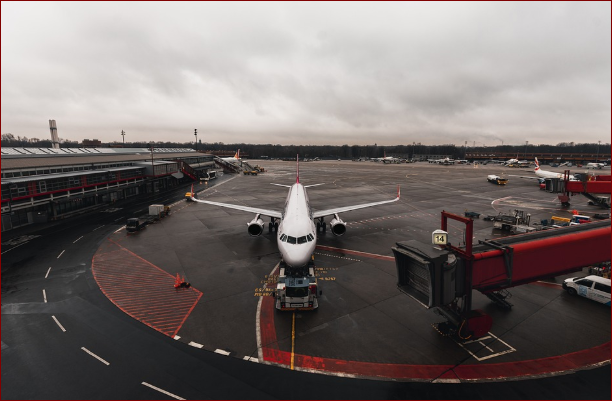Airport security has always been a tough balancing act. On the one hand, the need to protect passengers, crew, and infrastructure has to be a priority. However, this has to be achieved while making sure that busy airports still function efficiently.
Data analytics are playing an increasingly important role in achieving this. The ability to harness vast amounts of data in real-time is allowing airports to be proactive in identifying and mitigating potential threats.
This article examines the role of data analytics in improving airport safety and security.
The role of data analytics in airport security
Having vast amounts of data at your fingertips is one thing, harnessing the potential of all those ones and zeros is another thing altogether. So, just how are airports unlocking this potential and – by doing so – helping to alleviate the stress of air travel?
This section provides a grounding in the various ways this is being achieved.
Overview of the role of data analytics in airport security
Put simply, data analytics can be defined as – The use of various tools and techniques to identify trends and patterns within data and using the results to support informed decision-making.
In terms of airport security, this means using the gleaned insights and intelligence to proactively identify and address potential threats.
Some of the ways these techniques are manifesting themselves are:
- Enhanced threat detection: Data analytics enables the detection of anomalies and patterns indicative of security threats, facilitating timely intervention.
- Predictive modeling: By analyzing historical data, airports can develop predictive models to anticipate security risks and deploy preemptive measures.
- Resource optimization: Data-driven insights optimize resource allocation, ensuring efficient utilization of security personnel and technologies.
Data sources in airport security analytics
The data used in enhancing airport security comes in a variety of flavors. Understanding the data sources can help to understand just how all this information is improving airport security and safety.
Although this is by no means a comprehensive list, common data sources include:
- Surveillance cameras: Sophisticated industrial security cameras stationed throughout airports capture real-time footage, providing visual data for analysis and monitoring of passenger movements and security breaches. Increasingly, the analysis of CCTV data is performed autonomously using advanced AI algorithms.
- Passenger screening data: Data from passenger screening processes, including biometric scans and luggage screenings, offer valuable information for identifying potential security threats.
- Flight data and passenger manifests: Analyzing flight data and passenger manifests allows for the identification of suspicious activities or individuals and enhances border security measures.
Enhancing Threat Detection with Data Analytics
Data analytics can hardly be described as a new phenomenon. Information has always been used as a means of enhancing security. What has changed is that we now live in the age of “big data.” How we process this data and what actionable information can be gleaned from it has improved seismically in just a few short years. For airport security, this change has been nothing short of revolutionary.
Among the ways this “revolution” is improving airport security are:
- Real-time anomaly detection: Data analytics enables the identification of abnormal patterns and behaviors in real time, allowing for swift intervention in potential security threats.
- Behavioral analysis: By analyzing passenger behavior patterns, data analytics can flag suspicious activities or deviations from normal behavior, enhancing security screening effectiveness.
- Integration of multiple data sources: Data analytics integrates data from various sources, including surveillance cameras and passenger manifests, to provide comprehensive insights for threat detection.
It is worth recording that many of the technologies that are enabling this such as AI, the Internet of Things (IoT), and cloud-based systems can be considered as fledgling technologies. As such, the importance of data analytics in airport security is destined to keep growing exponentially.
The future of data analytics in airport security
Nobody wants to live in a world where Big Brother looms at every corner. However, airports are one instance where continuous monitoring is essential to keep us safe. But just what further advancements in the field are we likely to see in the next while?
Here are some of the main advancements we can expect to see:
- Predictive analytics: Advancements in predictive modeling and machine learning algorithms will enable airports to anticipate security threats with greater accuracy, allowing for proactive risk mitigation measures.
- Integration of biometric technologies: The integration of biometric data, such as facial recognition and fingerprint scanning is already happening. As the underlying tech improves, this will further streamline security processes while enhancing accuracy and efficiency.
- Bigger Data: With the exponential growth of data sources, airports will increasingly use big data analytics to extract actionable insights and enhance overall security protocols.
Airport security, by necessity, is continually evolving. It is this approach that means millions of us can fly each day without giving our safety too much thought.
Touching down: How data analytics are keeping our airports safe
We all like to grumble about the security rigmarole we have to go through each time we take a flight. However, the alternative to this doesn’t bear thinking about. Data analytics might not remove all these hassles, but it can streamline processes without compromising overall safety.
For passengers, staff, and crew, it is reassuring that the age of big data and real-time data analytics are keeping our airports safe and playing a major role in shaping the future of flying.
DISCLAIMER – “Views Expressed Disclaimer: Views and opinions expressed are those of the authors and do not reflect the official position of any other author, agency, organization, employer or company, including NEO CYMED PUBLISHING LIMITED, which is the publishing company performing under the name Cyprus-Mail…more







Click here to change your cookie preferences